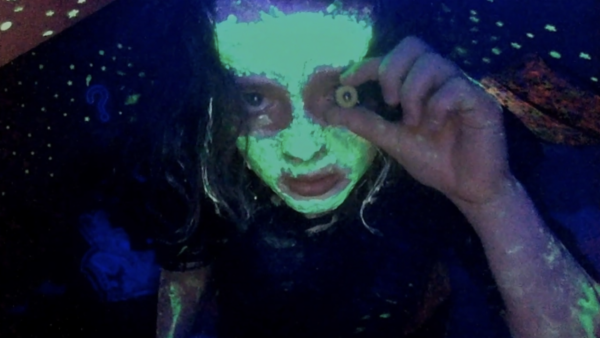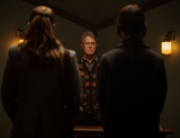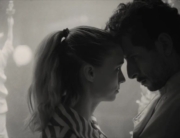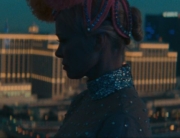Summarizing We’re All Going to the World’s Fair becomes a bit of a quandary. It has smart, intelligent things to say about loneliness, connection, and internet culture, but it is too long for its brief run time (about 85 minutes) and posits itself as a horror film with hints that horrific changes will affect the protagonist, yet, save for a couple of moments, it isn’t particularly scary. It’s more of an art film with dark elements.
Casey (a very impressive Anna Cobb) is a lonely teen who decides to take the “World’s Fair challenge.” This apparently involves posting about yourself and your fears on the World’s Fair website. The challenge is supposed to change participants in disturbing ways, and they have to upload videos documenting that change. Casey claims to have had an out of body experience (though we don’t really witness it). What we see instead is that she lives in a rural area and eats dinner alone as her dad has three jobs. There doesn’t seem like another parent in the picture or friend. It’s just her and her computer. Initially it seems this would be one of those movies that take place entirely on a computer screen, but it becomes quickly apparent that we are going to toggle back and forth between the screen and the actual world.
Eventually, Casey is contacted by an older man through the game. He warns her in a video of the danger of continually playing, shares a couple of cautionary tales, and, ironically, goads her to post more videos so he can make sure she is safe. That alone raises red flags. When we see the man, who is in his mid-forties, he sits in front of a bureau full of trophies and has drawings of monsters on computer screens. Now we think we know where this is going. The tracks seem to have been laid down for us. But writer/director Jane Schoenbrun doesn’t take us there, though the filmmaker doesn’t completely release the tension of what this particular relationship may bring.
What brings Casey and JLB (the older man, well played by Michael J. Rogers) together is a crushing loneliness. There doesn’t seem to be anyone else in their worlds. The only indication of the presence of Casey’s dad is his pounding on the door for her to quiet down. Meanwhile, there’s plenty of footage of Casey tromping around in the woods or at the edge of her seemingly desolate town, while JLB lives in a large house. The only other person we see there is a blur carrying what looks like groceries across the frame.
So, the question becomes why is he egging her on to post more videos if she is in danger? Also, as her videos become more disturbing—in one she tears up a stuffed animal she’s had since childhood and then weeps when she realizes what she’s done—is she actually performing for him? This is the fascinating core of the film.
It’s what surrounds this core that creates an issue. Scenes are slack and run way too long. There is very little horror or terror, per se, except for one good scare and a moment of body horror, though the subpar special effects blunt its impact. Still, the material itself doesn’t warrant an hour and twenty-six-minute running time, so you find lots of fat. There are some striking images though, like a strong contrast between the cocoon of Casey’s room and her economically ravaged snow-covered town. However, Schoenbrun has a tendency to park the camera and leave it there for excruciatingly long periods of time. Still, the filmmaker has arresting and relevant things to say about how the lonely seek comfort online and what happens when they discover that comfort turns cold.







Leave A Comment